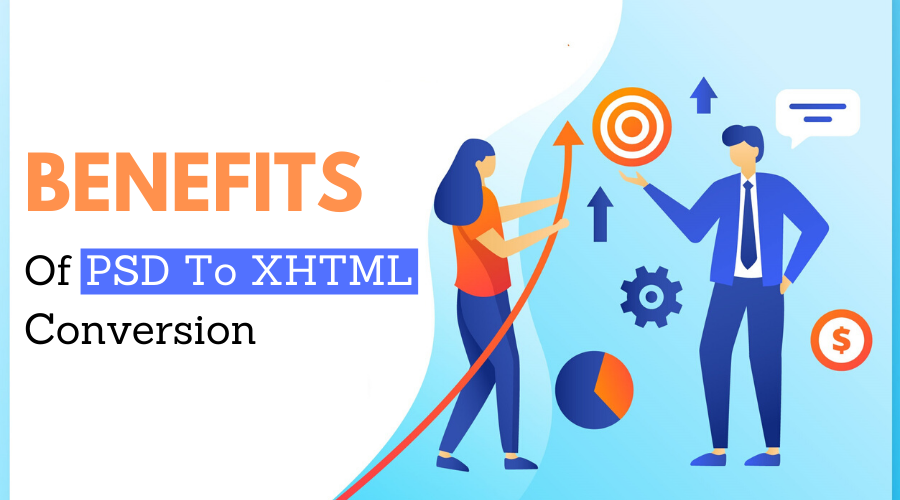The quality of the website depends on the conversion of the web design layout to the markup. In this blog post, We’ll discuss the various facts & Benefits of PSD to XHTML conversions and the features of XHTML to build a smooth & user-friendly website.
PSD to XHTML conversion is the first step to creating a flawless website design. If the conversion is done right, the resulting website comes out with clean code and pixel perfect design. A website is not merely a place that gives information about a company.
It has now transformed into a multi-faceted platform that is a marketplace, a window that connects clients with the business, and much more. Giant stride in the technology has enabled the developers to create such websites that are not only high on visual appeal but include certain features. The first step to building a great website is its design which is often prepared as a PSD and then converted to markup.
In recent times, professionals leverage XHTML, an extension of XML, to code the websites as it is dynamic, easy to learn, and can let you add extraordinary features in the website. The quality of the website depends on the conversion of the web design layout to the markup.
Good conversion is directly related to the SERP websites that can be crawled easily by the search engine bots. Web pages coded using XHTML can achieve W3C validation, and it is a crucial advantage for a website. Moreover, the ability of the PSD to XHTML conversion to create cross-browser compatible and responsive websites gives them an edge over others.
Some of the best Advantages of PSD to XHTML Conversion
SEO-Friendly markups
While talking about the benefits of PSD to XHTML conversion, it’s good to start with benefits like SEO-friendly markups. In the process of PSD to XHTML conversion, developers perform semantic coding that to get an SEO-friendly market up that boost your website’s online presence and thus improve your position in the SERPs. Once your website appears in the top search results, it improves traffic and thus lets you discover more potential customers to sell your products and services.
Cross-browser and backward compatibility
As one of the well-known benefits of PSD to XHTML conversion, cross-browser compatibility increases the demand for this conversion. The web pages created using XHTML are cross-browser compatible and hence, can be accessed from multiple browsers including mobile browsers. A uniform content display is achieved by PSD to XHTML conversion.
You may also like to read: PSD to HTML for Business: Tips for Hiring an Agency
Tableless design
The interesting thing about PSD to XHTML conversion is the tableless design. It helps you get a clean structure of your website page that makes it lighter. On the other hand, it’s a known fact that a lighter website page loads quickly and thus generates more traffic.
W3C Validation
XHTML is a W3C recommendation that implies that the code can be validated by W3C. The validation establishes the credibility of the website in the marketplace as such websites are considered error-free and reliable.
Uniform Content Display
Well, XHTML can support different PSD formats with the use of HTML. The said conversion is also useful in achieving your goal of uniform content display. Professionals create web pages leveraging such conversion is cross-compatible. It means that these pages are accessible through multiple browsers.
Business relies heavily on its websites as most of the users in recent times look for services and products online. In such a scenario, you cannot undermine the importance and benefits of PSD to XHTML conversion as it is the precursor to a great, feature-packed website that reaches out to the maximum number of users.
We would love to here your comments & questions about this blog post. Send us your thoughts by completing the contact form.











